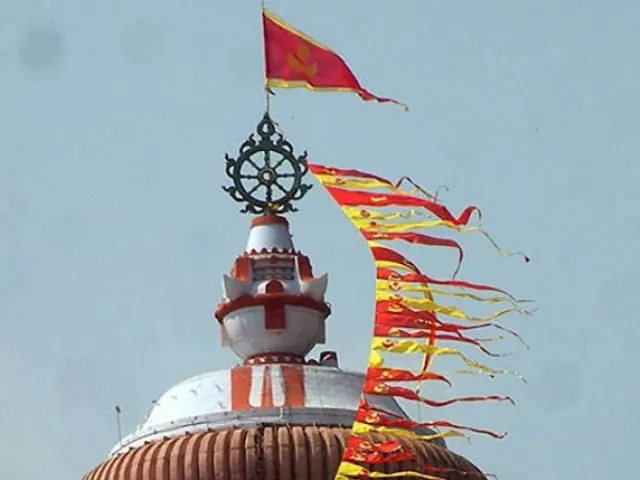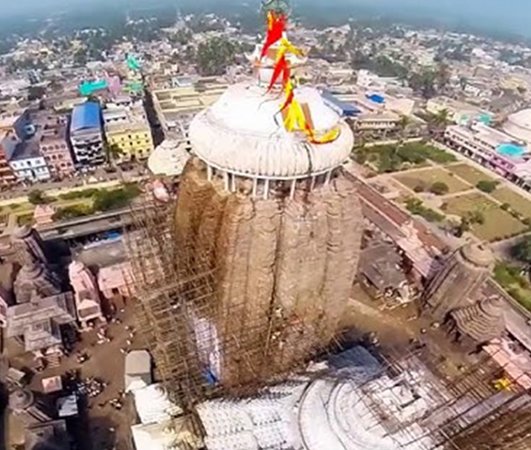Spiritually speaking, we are all familiar with the general principle that objects tend to move in the same direction as the wind. However, have you ever noticed that the Sri Jagannath Flag, positioned atop the temple’s spire, defies this natural rule? How does it do so?
When the wind blows in one direction, the flag atop the Sri Jagannath Temple waves in the contrary direction.
To this day, the strange occurrence remains unexplained by science. Each day, dedicated priests ascend the temple's towering structure to replace the 20-foot-wide triangular flag—an arduous task requiring great precision.
For the past 1,800 years, it has been the divine tradition for a saint to climb the 45-story dome of the temple and replace the flag. If this sacred practice is ever disrupted, even for a single day, the temple will be closed for 18 years in accordance with ancient customs.











